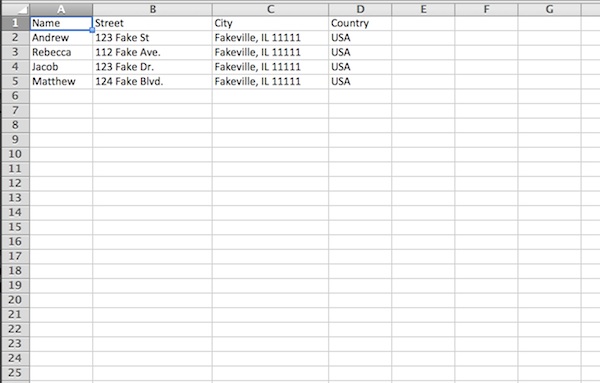
This would allow you to easily use the GROUP BY capabilities that you seek. There you can do many types of processing-just as you can with an SQL database-in order to create views of information (queries) that can be used as the source data for a Word mail merge. The other option is to forego Excel and place your data in a real database program, such as Access. (Full information on some of these methods can be found on the ExcelTips site. There are numerous ways that you can work with your data, including the removal of duplicate records or using macros to condense duplicate records into a single record. This means that it may be best to examine the source and do any sorting, condensing, and selecting in the workbook before you do the merge. The merge feature generally takes information as it is fed from the source document. If you are doing any other type of merge (such as merging to letters or to labels), then you are pretty much out of luck.
#How to mail merge labels from excel to word 2008 on a mac how to#
If you are doing that type of merge, you can find full information on how to group records at this Microsoft Office Support article: When creating a mail merge on a Mac, you must use Outlook as the default email program if you want to send out mail merges. 4.5 Mail merge to email greyed out on mac. This is not something that can be easily done with Word's mail merge capabilities, with one exception: You can do it if you are doing a directory-type merge. At the final step of the MS Word mail merge wizard, in the merge section, select Complete the Merge and then select Edit Individual Letters. She wants to "group" records so she can put all the records for a given individual into a single merge document. She notes that if she was using SQL she could use "GROUP BY" to make sure that all the records of a given individual were grouped together. Anytime a number to be merged doesn’t include decimals, it will display with zeros.Erin wants to do a mail merge using source data that is in an Excel worksheet where it is possible for a given individual to have multiple rows of data. 00 Indicates that you want to include a decimal point to two places with each number. # The number of number signs (#) typed after the comma indicate the number of digits that should be forced to display.

, Indicates that you want commas to designate thousands. $ The character to display at the beginning of the number (in this case, a dollar sign). \# Begins the “switch” which tells the document to apply formatting to the number. Your prices should now display appropriately. Right-click on the field name once again and select “Toggle Field Codes” to return to the original view. (There is a space between the first # and the $.) Place your cursor before the closing bracket and type: It will look something like this (where “Price” is your particular field name): On your original source document (before completing the merge), right-click on the field and select “Toggle Field Codes.” Numbers don’t always automatically display with the correct formatting (currency, decimals, etc.). You can get more information from Word’s online Help for all sorts of other things you can do with these field switches - search for numeric picture switch in the Help and expand the Picture Items icon at the end of that topic.įormatting Prices with a “Numeric Picture Switch”

For example, \# 0 for whole numbers \#0.00x for three decimal places etc. This example shows just one number format switch - experiment with other combinations to get the number format you want. (You can quickly test it works by clicking the View Merged Data button on the Mail Merge toolbar.) The next time you run a mail merge, the number will be in the format you entered at Step 4.



 0 kommentar(er)
0 kommentar(er)
